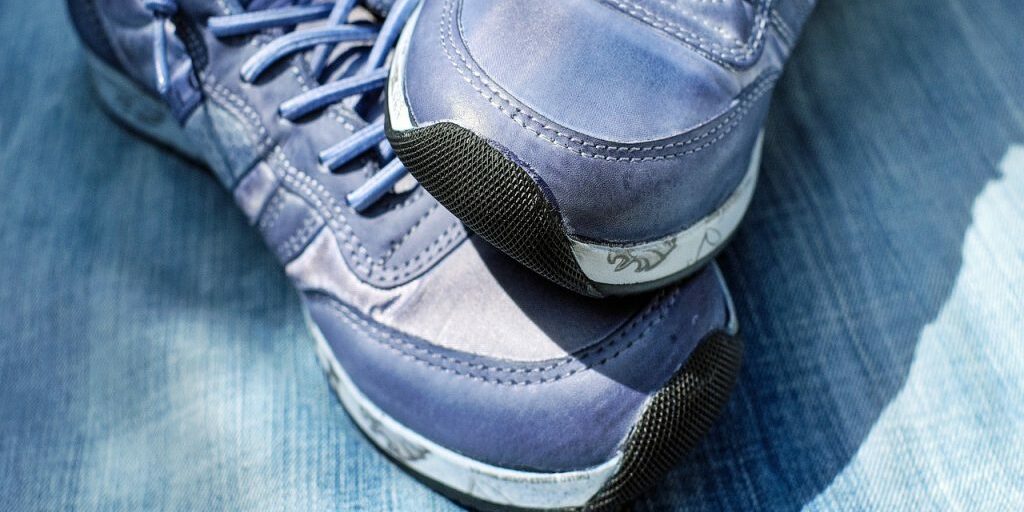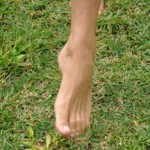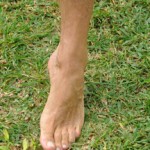I stopped running quite a few years ago because my knees started hurting, so I was really interested to hear what our wonderful guest blogger, Dr. John Douillard had to say about a running style called “Fox Running? After reading his article, I went out to give it a go today.
It’s a bit confusing until you get the hang of it and is best practiced with bare feet to start with. Anyway, here’s what Dr. John has to say:
Did you know that many experts are linking foot, ankle and knee injuries as well as low back and neck pain, to the modern running shoe? Many of the running strategies that are designed to reverse this injury are derived by studying the efficiency of native or barefoot runners.
About 15 years ago I was taught a native American running style called “Fox Running” that completely changed how I run today and has allowed me and hundreds of my patients to run injury free for many years.
In this article I will teach the exact foot placement of fox walking and running. Knowing this technique can change how you stand, walk and run painlessly.
Fox walking and running is simple, fun and will change your opinion of running as a beneficial exercise.
There are a handful of books on the subject “natural running styles” that are all wonderful and that I encourage you to read (listed at the end of this article). Fox Running seems unique as it describes the actual foot placement technique that natives used to run hundreds of miles effortlessly.
As far as I can tell, the technique called “Fox Running” was first described in Tom Brown’s Field Guide. Tom Brown began his training in fox running at 8 years old when Grandfather, one of the last remaining Native American Scouts, Shamans and Trackers, recognized Tom from a vision he had some 60 years prior and took him in as his student and successor.
I realize that many of you may have stopped running, perhaps due to injury or just the wear and tear of running and pounding. This only happens when you run like a westerner with big cushy running shoes that absorb all the shock and weaken the postural muscles of the body.
Run Like a Child
Natural running, which is the way native cultures would run down and exhaust a deer or elk, has been proven to be pivotal to human survival over the past 10,000 years. This is brilliantly described in, Born to Run, a best selling book I highly recommend if you still wonder if running is for you.
A few years ago, I organized some medical camps for the tribal people in the Himalayan foothills. A few Indian Ayurvedic herbal companies agreed to donate Ayurvedic medicines to these very poor people to whom I was despensing the medicines to.
The villages are extremely remote. When you enter a village all the children come running to greet you and escort you into the village. One day as we entered a village, the children came charging down the mountain side that bordered their village. The mountain was nothing but rock and loose shale. As the kids ran down this mountain at full speed the whole mountain of loose rock and sliding shale was moving. When they arrived bright eyed with huge smiles, I looked at their feet. They were all barefoot!
Their feet were wide, toes splayed like fingers, and their legs muscles were strong and glistening. We have lost our way in the west and I believe that each of us needs to re-educate our feet to support us the way they were designed. When was the last time you took off your shoes and ran across a grassy field, like when you were a child? Do it today!
Walk Like a Stalking Fox
According to Tom Brown, the Native Americans studied animals very closely and learned how to run as they did. They learned how to stalk an animal much like a fox would stalk it’s prey. A stalking fox takes slow, totally silent, delibrate steps with precise foot placement. When the fox runs, it uses the exact save foot bio-mechanics as when it is stalking. So before we can fox run we must learn to fox walk.
When you watch a fox run, their feet touch in a straight line. Their tracks are with one foot right in front of the other. Imagine you are walking on the white line on the side of the road. Your feet must stay on the imaginary white line when fox walking and eventually when fox running.
How to Fox Walk
When you step, the leading foot touches the ground with the front outside of the foot first (5th metatarsal). See Figures 1 and 2 below:
Figure 1
Figure 2
Then the foot naturally roles across the ball of the foot towards the big toe (1st metatarsal).
Then, as the weight builds on the foot, the heel comes down into a three point landing.
Figure 4
Then push off for the next step is off this three point landing.
Try this walking in your living room, as if you were stalking an animal: sneaking up on them with each phase of the three point landing. Be slow and delibrate.
How to Fox Run
Unlike fox walking where the feet land in a straight line, start running in a wider track so your feet are shoulder width or less apart, with your feet pointing straight ahead in the direction you are going.
Start very slowly and focus on the same foot mechanics as in fox walking.
As you reach with your foot to the next stride, watch your foot naturally turn out laterally as you prepare to land on the outside of the foot (see Figures 1 and 2 above).
Come down, putting the weight across the ball of the foot (see Figure 3 above).
As your full weight lands, drop the heel into a three point landing (see Figure 4 above).
Push off and begin the next stride from this three point placement of the foot.
Once you get the hang of this, start moving your feet closer together until you are eventually running with your feet in a straight line like a fox.
Soon the 3 point landing happens quickly and gracefully with each stride.
Watch the video, where I demonstrate this in detail.
As you can see, all the muscles of the foot are engaged in this foot strike. Strengthening these muscles is the first step in re-educating your postural muscles and eliminating postural pain and unnecessary injuries.
To avoid foot fatigue while learning this technique, build up slowly and surely to a healthier body.
Start with 10-15 minutes of fox running, 3-4 times per week – even if you are already a runner. It’s best to start barefoot on a grass field so you can really feel the muscles of your foot work with each stride. If you get hooked, pick up a pair of minimal running shoes without a big heel pad.
Watch a Child Run
I took some pictures of my daughter running on the beach (see photo at the right). With no instruction at all, I was amazed to see how perfect she ran. Running like a child is natural. We just need to practice being childlike.
In my upcoming online course on natural running, I will describe exactly how these techniques work, the exact bio-mechanics of injury prevention, the best types of shoes, the different techniques available and how to put it all together.
Do you want to learn more? Sign up for my video-newsletters, where we will announce the online course when it is available.
Recommended Reading:
Barefoot Running by Michael Sandler
Born to Run by Christopher McDougall
Chi Running by Danny and Katherine Dryer
Evolution Running by J. Friel and K. Mierke
Dr. Nicholas Romanov’s Pose Method of Running by Nicholas Romanov
Body Mind and Sport by John Douillard
Tom Brown’s Field Guide to Tracking and Awareness by Tom Brown








